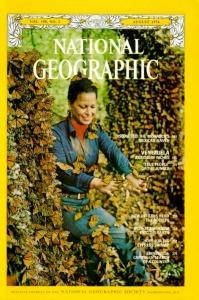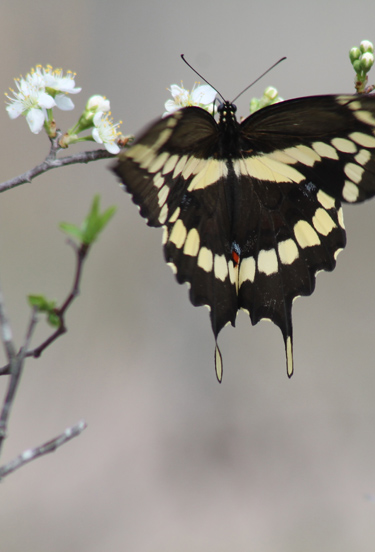Connecting Children to a Robust Natural World


When I was a child my parents subscribed to National Geographic and I always looked forward every month to see what new wonders of the world they would surprise and delight us with in their latest issue. We kept those magazines for years and used them for all sorts of homework and art projects. There was one issue in particular that was my favorite and I still have it; August, 1976. That month featured a beautiful photo of a woman surrounded by monarch butterflies in their secret wintering haven in Mexico.
Growing up in Central Texas, I’ve always had a special admiration for the monarch butterfly. Each April and October they flutter along ancient migration routes that carry them through Texas. When I was at college at Texas State University, I would linger in the library on campus to watch the butterflies float along, catching the updrafts of the building as they journey to and from Mexico. On days when I felt like there was no possible way that I could continue on with working full time and go to school full time; I would watch those little creatures and be inspired to keep going.
On November 22, 2013 the New York Times published an article titled “The Year the Monarch Didn’t Appear.” The article summarized that the monarchs have dropped to record lows and explained all the many factors for their demise; pesticides, loss of habitat, loss of milkweed and native plants, and an increase in extreme weather patterns. Fewer than 3 million butterflies reached their wintering grounds in Mexico this year compared to 60 million last year.
The impact of the loss of such an iconic and important member of North American wildlife opens my heart to many questions. I work daily to connect children and families to nature so that they can have a healthier, happier and smarter future. But it concerns me that we are reaching a point when the natural world that kids today are discovering, is so dramatically different than the one that I enjoyed just a few decades ago. I have to wonder if my generation is going to be the one that doesn’t just see the loss of most of the world’s important mega fauna and now the bees and butterflies; but we let it happen.
It makes me want to do more. It makes me want to double my efforts to not just connect children with nature, but make sure that they have access to all the biodiversity that I had as a child. It makes me want to educate others about the harm that Nicotine-based pesticides have on our insect, bird and bat populations. It makes me want to join in the growing chorus of voices that are demanding that we stop importing invasive plants into our country. It makes me want to educate others about land fragmentation and loss of habitat. And it makes me want to ask each of you to think about what more can you do in your daily life to ensure that we have a healthy, robust natural world to connect children with.
Here are some simple tips to get started:
1. Remove the invasive plants from your yard and replace them with native plants that require less water.
2. Don’t use harmful pesticides or fertilizers on your yard. Replace them with organic choices or refrain from using them at all. Never use Roundup or other weed killers.
3. Plant milkweed or other native plants that support the migrating butterflies and birds. (see list below for garden centers that carry milkweed.)
4. Engage with a local school, church or business to influence them to make informed choices that will support local biodiversity.
5. Get outdoors. Caring for nature starts with a connection with nature.
I know that we can do better for our children to give them a natural world that is filled with inspiration and wonder, like the one I discovered on the pages of National Geographic in 1976. National Geographic; August 1976: Discovered: The Monarchs Mexican Haven.
Find milkweed at: Barton Springs Nursery, Countryside Nursery, Garden-Ville, Great Outdoors, It's About Thyme, Natural Gardener
Find out where to get outdoors at www.naturerockstexas.org
New York Time; by Jim Robbins: The Year the Monarch Didn’t Appear







